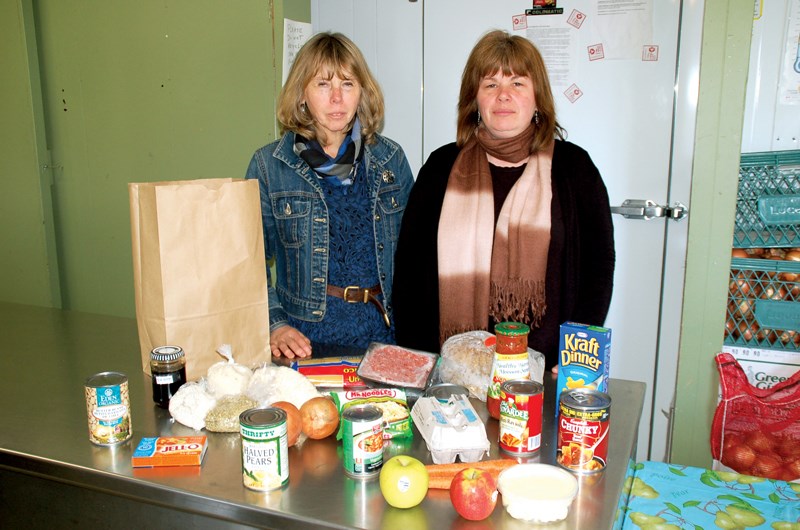The truth is that people living on assistance in B.C. can’t afford to purchase healthy food regularly. Many on assistance survive on pastas and packaged foods, which can negatively impact their health, and a lack of healthy options combined with the struggle to ration food takes a toll on a person’s emotional state and overall well-being.
These are just a few of the things Sunshine Coast Community Services Society (SCCSS) wants to highlight during Hunger Awareness Week May 5 to 9.
“Really what we wanted to do was demonstrate the reality of what people are facing,” said Kelly Foley, community connections manager with SCCSS. “We wanted people to realize how impossible it is and how stressful it is, and really to me it’s important to share that with our community to foster empathy, compassion and understanding.”
With that in mind, Foley took on the challenge to shop for her family of three with the amount a single mom and two children would receive for food for a month on social assistance — $375.
Despite sending the kids to school with the same lunch every day, offering only oatmeal at breakfast, no snacks, no desserts and only one glass of milk a day for the kids, Foley ended up spending $250 more than she had budgeted.
“I was surprised at how impossible it was and I can’t imagine my family being joyous or happy if I offered them that diet,” she said. “Also by doing this I recognized there’s no money left over. So nothing for a birthday party or something going on at school or all those other costs like clothing or sports.”
Asked what she would have done if she was forced to spend only the $375 allotted, Foley said she’d eliminate the few fruits and veggies she purchased and stick mainly to noodles and starchy foods.
“And I’d probably rely on the school breakfast programs for the children and go to the food bank,” she said.
Many on assistance end up at the Sunshine Coast Food Bank in Sechelt, where coordinator Dale Sankey said 640 households are registered.
Last year the food bank gave out food 12,359 times to 1,223 individuals, but the amount in the bags is getting smaller as the cost of food goes up and donations dwindle.
Typically the food bank gets a boost around Christmas time, but right now there’s not much on the shelves.
“Until we start getting donations from people’s gardens, it’s pretty lean,” said food bank volunteer Shelley Grainger.
Even when the shelves are full, however, the food bank is supposed to be a Band-Aid solution to help people get through, not act as a replacement for a family’s grocery needs.
One bag of items is meant to supplement a family for about three days, Sankey explained.
“No food bank is there to support all 100 per cent of the food,” she said.
So with assistance levels too low for nutritious food to be purchased and the food bank unable to meet everyone’s needs, Foley suggests people get active on two levels to create change.
“I would like people to pressure the government to raise the rates by writing to their provincial MLA or to the Ministry of Social Development and Social Innovation,” Foley said.
At a grass roots level Grainger suggests people “plant a row for the food bank” when they plant their gardens this year.
“People can also purchase the $2 Share BC coupons at any grocery store and 100 per cent of that money goes to the local food bank,” Sankey said. “If 100 people decided they’d do that, we’d get $1,200 a month and we can buy a lot of food with that.”
The Dietitians of B.C. are also pressing the government for change. They produced a report in 2011 that details a decade of the rising cost of food in B.C., and in October of last year they sent a submission to the Auditor General. That submission called for all British Columbians to “have access to a healthy diet, including those receiving social assistance.”
The submission links the need for a poverty reduction strategy to address the issue and notes B.C. is one of only two provinces in Canada without one.
Assistance levels in B.C. have not been raised since 2007.



